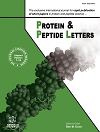- Home
- A-Z Publications
- Protein and Peptide Letters
- Previous Issues
- Volume 22, Issue 4, 2015
Protein and Peptide Letters - Volume 22, Issue 4, 2015
Volume 22, Issue 4, 2015
-
-
Cellular and Network Mechanisms Underlying Memory Impairment Induced by Amyloid β Protein
More LessAuthors: Karla Salgado-Puga and Fernando Pena-OrtegaIt has long been known that amyloid ß protein (Aß) plays a key role in Alzheimer’s Disease (AD) and in Down Syndrome cognitive decline. Recent findings have shown that soluble forms of Aß (mostly Aß oligomers; Aßo), rather than insoluble forms (fibrils and plaques), are associated with memory impairments in early stages of AD. Since synaptic plasticity and oscillatory network activity are required for memory formation, Read More
-
-
-
Cytokines Play a Key Role in Communication between Mesenchymal Stem Cells and Brain Cancer Cells
More LessAuthors: Helena Motaln and Tamara Lah TurnsekNumerous small molecules including cytokines primarily associated with immune response have been shown to play a role in normal mesenchymal stem cells (MSC) and tumour cells’ communication. One characteristic that distinguishes MSC from fibroblast and other cells of mesenchymal origin is their pro-tumour migratory behaviour. Recognizing the cytokines as key players of the MSC/tumour cell cross-talk and understanding t Read More
-
-
-
Angiotensin Converting Enzyme 2 Activator (DIZE) Modulates Metabolic Profiles in Mice, Decreasing Lipogenesis
More LessRecent studies have shown that angiotensin-converting enzyme 2 (ACE2)/angiotensin (Ang) -(1-7)/Mas axis activation is able to improve the metabolic profile, enhance glucose tolerance and insulin sensitivity, improve metabolic parameters, and counteract deleterious effects of Ang II. The effects of endogenous ACE 2 activation on the metabolic profile of mice are poorly studied. In this study, 12 weeks old male mice w Read More
-
-
-
Two Myomodulins Isolated from Central Nervous System of Northwest Pacific Sea Hare, Aplysia kurodai, and Their Activities on Other Mollusks
More LessAuthors: Chan-Hee Kim, Hye-Jin Go and Nam Gyu ParkThe central nervous system (CNS) of Aplysia is a fascinating source to identify and characterize neuropeptides and neurotransmitters because of offering many useful divergent and convergent neuronal aggregates. Here, two neuropeptides were isolated from the extract of CNS of the northwest pacific sea hare, Aplysia kurodai, using HPLC system for fractionation and the anterior byssus retractor muscle (ABRM) of the Read More
-
-
-
Curcumin Mitigates the Fibrillation of Human Serum Albumin and Diminishes the Formation of Reactive Oxygen Species
More LessThe formation of amyloid fibrils are thought to contribute to pathogenesis of many amyloids associated human diseases. Here the impact of curcumin on amyloid formation of human serum albumin (HSA) was studied. Incubation of HSA at 68°C under physiologic pH led to amyloid fibril formation. Thioflavin T (ThT) fluorescence was used for determination of amyloid fibril formation. Atomic force microscopy experiments Read More
-
-
-
Peptides as Modulators of α-Synuclein Aggregation
More Lessα-Synuclein forms amyloid deposits in the dopaminergic neurons; a process that is believed to contribute to the Parkinson’s disease. An emerging theme in amyloid research is the hypothesis that the toxic species produced during amyloid formation share common physic-chemical features and exert their effects by common modes. This prompted the idea that molecules able to inhibit a protein aggregation process may cross-re Read More
-
-
-
Proteome Analysis of Ofloxacin and Moxifloxacin Induced Mycobacterium tuberculosis Isolates by Proteomic Approach
More LessOfloxacin (OFX) and moxifloxacin (MOX) are the most promising second line drugs for tuberculosis treatment. Although the primary mechanism of action of OFX and MOX is gyrase inhibition, other possible mechanisms cannot be ruled out. Being the functional moiety of cell, the proteins act as primary targets for developing drugs, diagnostics and therapeutics. In this study we have investigated the proteomic changes of Mycoba Read More
-
-
-
Modifications in Trypsin Digestion Protocol for Increasing the Efficiency and Coverage
More LessAuthors: Kirtimaan Syal and Raghu TadalaStandard trypsin digestion protocol of proteins followed by MALDI-MS analysis has been realized as an important tool for the identification and characterization of proteins. In this article, we proposed the elimination of the step of ‘staining/de-staining of gel pieces’ in in-gel digestion protocol in order to improve the efficiency of trypsin digestion. Coomassie dye is known to interfere with digestion of proteins by trypsin and the Read More
-
-
-
Isolation and characterization of an Aspartic Protease from Salpichroa origanifolia Fruits
More LessThis report describes the purification of an aspartic protease (salpichroin) from ripe fruits of Salpichroa origanifolia (Solanaceae) starting with precipitation using organic solvents and anionexchange chromatography with 32.1% recovery and 13.4-fold purification. SDS-PAGE and zymograms of this enzyme showed a single band corresponding to an apparent molecular mass of approximately 32 kDa. The biochemical and kinet Read More
-
Volumes & issues
-
Volume 32 (2025)
-
Volume 31 (2024)
-
Volume 30 (2023)
-
Volume 29 (2022)
-
Volume 28 (2021)
-
Volume 27 (2020)
-
Volume 26 (2019)
-
Volume 25 (2018)
-
Volume 24 (2017)
-
Volume 23 (2016)
-
Volume 22 (2015)
-
Volume 21 (2014)
-
Volume 20 (2013)
-
Volume 19 (2012)
-
Volume 18 (2011)
-
Volume 17 (2010)
-
Volume 16 (2009)
-
Volume 15 (2008)
-
Volume 14 (2007)
-
Volume 13 (2006)
-
Volume 12 (2005)
-
Volume 11 (2004)
-
Volume 10 (2003)
-
Volume 9 (2002)
-
Volume 8 (2001)
Most Read This Month
Article
content/journals/ppl
Journal
10
5
false
en


